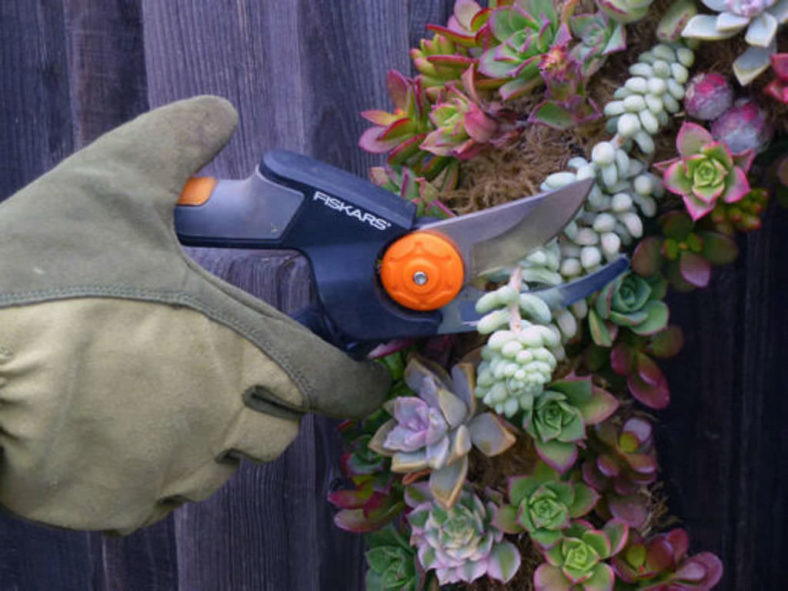Succulents store water in their thick fleshy leaves. Some succulents produce branching stems with attractive foliage, while others are more prized for their colorful flowers. Most succulents thrive in drier conditions, although nearly all make suitable houseplants if your outdoor climate is too wet. While most types do not require pruning, some branching succulents can benefit from a light trim to maintain their size and shape, allowing them to thrive in a small garden bed or container.
Instruction
Examine the leaves on the stem you plan to prune to determine where you should cut the stem. Find a leaf or leaf node pointed in the direction you want the stem to grow, then cut the stem just above this spot. The new growth at the pruning spot will branch in the direction of the leaf or leaf node.
Cut through the stem within 0.5 inches (1.3 cm) of the desired leaf or node. Cut at a 45-degree angle using a clean, sharp knife.
Remove up to a third of each stem's length as you prune. For trailing succulents, vary the size of each pruned stem to add visual interest to the plant.

Tip
Prune succulents in early spring, just before new growth begins. Flowering varieties are pruned after blooming or during the dormant winter season.
The cuttings from succulent pruning can root and grow into new plants. Plant the cuttings in a pot filled with moist potting soil and keep the soil moist until the cuttings have rooted and started showing signs of new growth.
Warning
Some succulents, such as Euphorbia, produce an irritating sap. Wear gloves when pruning succulents to protect your skin.
Source: sfgate.com
Links
- Succupedia: Browse succulents by Scientific Name, Common Name, Genus, Family, USDA Hardiness Zone, Origin, or cacti by Genus